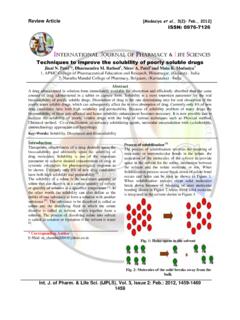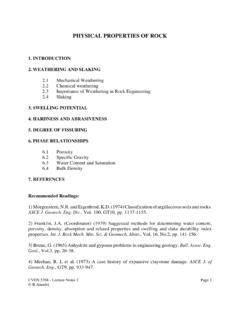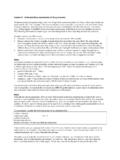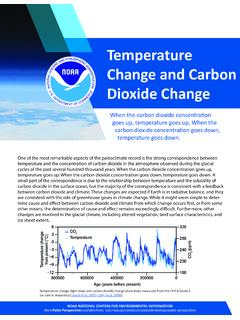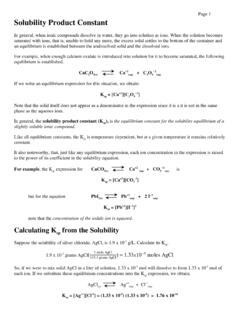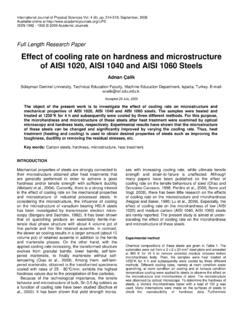Transcription of Studies on solubility of curcumin
1 Research Article [Modasiya & Patel, 3(3): Mar., 2012] ISSN: 0976-7126 Int. J. of Pharm. & Life Sci. (IJPLS), Vol. 3, Issue 3: March: 2012, 1490-1497 1490 INTERNATIONAL JOURNAL OF PHARMACY & LIFE SCIENCES Studies on solubility of curcumin M. K. Modasiya1* and V. M. Patel2 1, JJT University, Jhunjhunu, ( ) - India 2, APMC College of Pharmaceutical Education and Research, Himatnagar, (Gujarat) - India Abstract curcumin is coming from the Curcuma longa which gives golden color and have the biological importance. As per the survey it is water insoluble, the poor solubility and wettability of curcumin leads to poor dissolution and hence shows poor bioavailability. The present study is aimed at increasing solubility of drug using solid dispersion technique.
2 The solid binary systems were prepared using different drug: polymer ratio (1:1, 1:4 and 1:8) with polyethylene glycol 4000 and 6000 by different techniques like physical mixing, melting method and solvent evaporation method. PVP K 30 was also used as a polymer. The formulations were characterized by scanning electron microscopy, thin layer chromatograpy, compatibility study, diffraction study and in vitro dissolution rate Studies . The solubility of drug increased linearly with the increase in polymer concentration. The solid dispersion of drug prepared by hot melt method demonstrated higher drug dissolution rates in comparison to solid dispersion prepared by physical mixtures, solvent evaporation method and pure curcumin . Key-Words: curcumin , Solid dispersion, Hot melt method, PEG Introduction Oral bioavailability of a drug depends on its solubility and/or dissolution rate, and dissolution may be rate determining step for appearance of medicinal effect , therefore efforts to increase dissolution of drug with limited water solubility is often needed.
3 Many methods are available to improve these characteristics, including salt formation, micronization and addition of solvent or surface active agents. Solid dispersion (SD) is one of these methods, and involved a dispersion of one or more active ingredients in an inner carrier or matrix in solid state prepared by melting, dissolution in solvent or melting solvent method1. A huge investigation exposed that turmeric and curcumin has an extensive variety of curative property such as antiinflammatory2, antibacterial2, antifungal3, anticancer4 antispasmodic 5, antioxidant 6, antiamoebic8, anti HIV9, antidiabetic 10, antifertility 11 etc. curcumin , a golden color attained by Curcuma longa is been used from the time immemorial as a nutritional complement, coloring means, spice and also for therapeutic the purpose. It is also accounted that the curcumin is safe and sound up to 8g/day 12-14.
4 * Corresponding Author E-Mail: Curcuminioids, the oleoresins, resultant by ethanolic extraction of turmeric are mainly liable for golden color and are believed liable for the natural actions. In neutral and acidic situation curcumin shows bis keto form. In acidic condition curcumin performs as an influential hydrogen patron 15-16. For improving solubility , dissolution behavior and on set of action solid dispersion is one of the preferable technique17. It rivet a spreading of one or more drug component in an inert transporter or matrix in solid state set by melting, dissolution in solvent or melting solvent method17. The method has been used for a broad range of weakly water soluble active ingredients such as nimesulide18, tenoxicam19, nifedipine20, nimodipine21. The aim of the present work is carried out to develop the water solubility of curcumin by solid dispersions process.
5 Material and methods curcumin as a drug and other non drug component like PVP, PEG 6000, PEG 4000, and Micro crystalline cellulose were obtained by the Sehat Pvt. Ltd., Gujarat, Himatnagar. All the other regents used were of laboratory grade and used as they acquired. curcumin solid dispersions17 Solid dispersions of curcumin were prepared to improve bioavailability by many the following methods among them hot melt method and solvent evaporation methods are common (Table 1). Research Article [Modasiya & Patel, 3(3): Mar., 2012] ISSN: 0976-7126 Int. J. of Pharm. & Life Sci. (IJPLS), Vol. 3, Issue 3: March: 2012, 1490-1497 1491 Physical Mixtures They were prepared by using drug/PEG-6000, PEG-4000 and PVP K 30 in 1:1, 1:4 and 1:8.
6 curcumin and polymers were mixed uniformly using by triturating. These physical mixtures were preserved in polyethylene bag in desiccators until further use. Hot melt method In this method, the carriers such as PEG 6000 and PEG 4000 were selected. The drug to polymer ratio was kept 1:1, 1:4 and 1:8. The carrier was first melted in the china dish at about 60 0C and the drug was dispersed in the molten mixture with constant stirring. The dispersion was poured immediately into the molds (specially designed for filling into the capsule) and cooled immediately. Solvent evaporation method In solvent evaporation method, drug and the carrier were dissolved in alcohol and the adsorbent like micro crystalline cellulose (MCC) were dispersed in the same medium with constant stirring. Alcohol was evaporated under low pressure to get the solid dispersion.
7 In this method, PEG 6000, PEG 4000 and PVP-K-30 were used as carriers and MCC was used as adsorbent. Drug: carrier: adsorbent ratio was kept 1: 1: 2. The product obtained was free flowing unlike the solid dispersions obtained by hot melt method. The solid dispersions showing good water solubility from the above methods were further studied evaluated. Evaluation of solid dispersion18 All solid dispersions from different methods were initially screened for their aqueous solubility . The solid dispersion showing better solubility were further screened drug excipient interaction Studies including TLC and FTIR. The morphological changes were measured by SEM and X-Ray diffraction Studies . In vitro release Studies and in vitro absorption Studies in rat were carried out to understand the release profile of the formulation.
8 solubility of solid dispersions Excess of solid dispersion was dispersed in the 30 ml of distilled water to get the super saturated solution with constant shaking for 24 hrs at ambient temperature until equilibrium was attained. 5 ml of the supersaturated solution filtered through Whatman filter paper No 1 and 1 ml of the filtrate was further diluted suitably with methanol and the absorbance was read at 425 nm. solubility Studies were performed for pure drug, physical mixtures and solid dispersion from both hot melt method as well as solvent evaporation method19. Thin layer chromatograpy Studies TLC method was used to check the interaction of the drug with the polymer. A proper ratio of chloroform and methanol was used as mobile phase and as a stationary phase silica gel G was used. The spots were detected under UV light as well as fluorescence light and Rf values were noted20.
9 IR Studies Spectrophotometer was used in this study by applied potassium bromide disc method. An IR study was applied for both pure active ingredient and solid dispersions. The powdered sample was closely mixed with IR grade potassium bromide. The mixture was then compacted into clear disc under high pressure using special dies. The disc was placed in IR spectrophotometer using sample holder and spectrum was recorded21. Scanning electron microscopy Studies Pure drug as well as solid dispersions was sputtered coated using pelco gold palladium coaters. The surface morphology of the layered sample was examined using SEM. The sample were placed in an evacuated chamber and scanned in a controlled pattern by an electron beam. Interaction of the electron beam with the specimen produces a variety of physical phenomenon that detected, are used to form images and provide information about the specimens21.
10 X-ray diffraction Studies Crystalline compounds give characteristic X-ray diffractogram. This pattern of diffraction is useful for the identification of compound. Quantitative analysis of Xray powder diffraction technique is a measurement of a series of d spacing, the interplanar spacings from the position of the diffraction peaks. The diffraction angle is a recorded in terms of 2 and all 2 values are readily converted to d-values expressed in angstroms units for a given wave length of X rays. The sample was rotated during the data collection to reduce orientation effects, and the data was recorded using a curved photosensitive detector. The X ray was measured in the range of 2 =10 to 60 at steps of (100) at ambient temperature21. Results and Discussion curcumin is practically water insoluble and have poor bioavailability.
